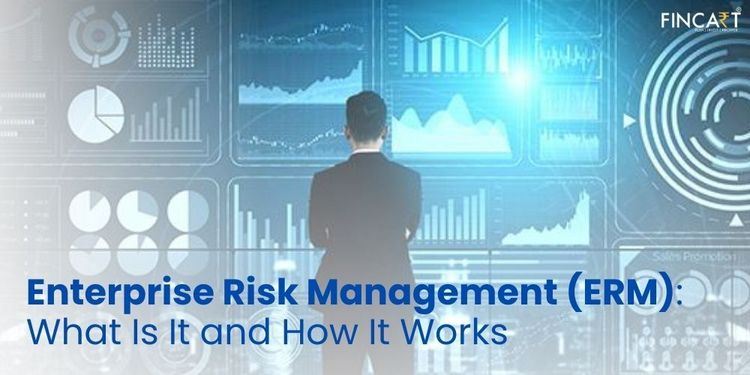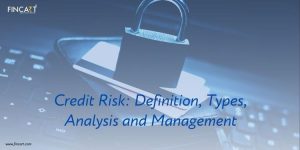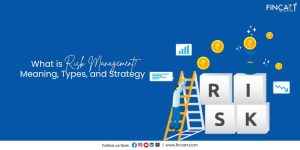Table of Contents
ToggleRisks are unavoidable and every business encounters them. These ever evolving risks can have a severe impact on individuals, organisations, and economies. Hence, risk management is essential for the long-term sustainability and growth of enterprises.
This is where Enterprise Risk Management (ERM) steps in. Unlike traditional risk management, which concentrates on examining specific risk areas, enterprise risk management looks at risk that considers the big picture. ERM takes into account how different risks are connected and affect the entire organisation and its networks. It provides a thorough approach to recognizing, evaluating, and addressing the risks that have the potential to impact an organisation’s goals and success.
In this article, we will take a deep dive into the world of ERM, explore its components, and types, and understand its importance.
What is Enterprise Risk Management (ERM)?
Let’s talk about what is erm. In simple words, enterprise risk management takes a big-picture approach and involves decisions made by top-level managers. This means that these decisions may not make sense for just one part of a business. It’s a strategy that starts at the top and focuses on finding, understanding, and preparing for potential problems that could disrupt the functioning of a company.
Instead of each part of the business looking after its risks, the company pays more attention to watching over everything as a whole. ERM enables businesses to take a proactive approach to risk management rather than simply reacting to crises when they occur.
Components of ERM
To understand ERM more clearly, let’s take a look at its various components.
Risk Governance:
Different organisations have different attitudes towards risk. Some are very cautious and try to avoid risks, while others encourage taking risks to achieve their goals. This part of risk management is all about making sure that there are clear rules in place for who does what when it comes to managing risks in a company. It’s important to have a specific team or person whose job is to watch over all the risk management activities to make sure everything is running smoothly.
Risk Assessment:
A company must figure out its risk appetite while trying to achieve its goals. ERM framework encourages companies to try and quantify risks. They do this by looking at the possibilities of risks and how much it would cost. This means they have to find and study the risks, see how they could affect what the company wants to achieve, and then decide which risks are the most serious.
Risk Mitigation:
After finding and understanding risks, plans, and strategies are developed. These plans can involve different approaches, like avoiding the risk altogether, reducing it, sharing it with others, or accepting it. Other than that, they also have to follow the rules and standards both inside the company and those set by outside authorities.
Risk Monitoring and Reporting:
Every ERM program needs to regularly share information with stakeholders and other senior professionals (or auditors) of the company. The company can have its own group or hire an external auditor to double-check its practices and policies. This includes reviewing the expected performance of the company compared to what’s being done. They also listen to feedback, look at company data, and report to the stakeholders about any potential risks.
Types of ERM
Let’s talk about the various types of enterprise risk that impact the internal working of companies:
Financial:
As the name suggests, financial risks are associated with a company’s capital. To make a company’s goals work, they need to have sufficient cash flow. Finance is an integral part of a company’s growth. Some financial risks include fluctuating interest rates, cash flows, dealing with inflation, and making sure the value of assets doesn’t go down.
Compliance:
These risks are related to regulations and laws set by the government. Illegal activities by a company can lead to compliance risks. These risks can include things like harming the environment, committing legal crimes, etc. In simple terms, it’s about making sure the company plays by the legal rules.
Operational:
These are affected by the internal matters of the company, like decisions and actions they make. It’s all about the risk of something going wrong in their everyday work, like not training the new employees well, product management, constantly rehiring heads of departments, etc.
Hazard:
These risks are closely linked to the health and safety of the people who work for the company and its customers. It’s important to keep an eye on these risks to keep everyone safe. Hazard risks can involve things like fires, damage to buildings and property, bad weather conditions, theft, and criminal activities.
Strategic:
Strategic risks happen when the demand and supply are affected or in case of any rivalries. If a company doesn’t pay attention to these risks, it can lead to losses. For instance, strategic risks can be about things like the company’s reputation getting hurt, new competitors coming into the market, changes in how people behave, or new technology trends.
Also Read: What Is Financial Planning Process And How To Execute It?
Examples of enterprise risk management
A good ERM program can help business leaders learn how to manage risks effectively. Let’s explore an example of enterprise risk management:
Let’s suppose that Harris is a member of the board at Milkista, a dairy company. Recently, he heard the news that people were getting sick from dairy products. Now, this was a hazardous risk. The company quickly organised a meeting where Harris and the other board members decided to bring in a Chief Risk Officer (CRO) to aid the risk identification.
After looking into it, the CRO found out the harmful substance in the milk. To keep people safe, the company ceased the production of an entire batch of dairy products.
Had they gone ahead and sold those products, the company could have faced legal trouble, and their reputation would have been damaged.
In this example, the company used all the components of ERM to control the situation which could have led to a huge problem.
The importance of enterprise risk management
Now that you understand what ERM is and its components, let’s talk about why it’s important for businesses in India:
- Protecting Investments: ERM helps keep a company’s money safe by making sure it doesn’t spend it on risky projects.
- Enhancing Decision-Making: ERM helps leaders make smart choices by showing them potential risks so they can pick the best path for their company.
- Compliance and Legal Obligations: ERM makes sure that a company abides by the rules and regulations.
What are the benefits of an enterprise risk management solution?
Using an ERM solution can offer many advantages to a company. Let’s explore the benefits of erm.
Promotes a Stronger Focus on Risk:
When a company uses the ERM model, it helps top leaders become more aware of risks. This makes it easier for the company to handle problems in a better way. Plus, it improves communication within the organisation.
Improved Financial Stability:
ERM’s main job is to warn companies about unexpected risks and help them avoid big losses. Without risk management, a company could lose its reputation and a lot of capital. ERM makes sure that the company’s money is safe and doesn’t get wasted on risky projects.
Effective Use of Resources:
ERM helps a company figure out which problems are the most important, so they can spend their money and effort in the right places. ERM helps companies find the issues and fix them without needing to spend extra money.
What is the future of enterprise risk management
The future of ERM holds great promise due to several key factors. It is becoming more tech-savvy with the integration of advanced technologies like artificial intelligence, data analysis, and machine learning, which improves its ability to understand and predict risks.
Moreover, organisations are recognising the significance of environmental and social risks, such as climate change and social responsibility, which ERM is evolving to address. In the future, ERM will adapt to meet new compliance requirements, ensuring that businesses stay in line with the law while managing their risks effectively.
Also Read: What Is The Risk Associated With Unlisted Stocks?
Protect What Matters Most!
Contact Fincart for tailored insurance and risk management solutions to safeguard your future.
Conclusion
Every company has to deal with a plethora of possible problems that can arise from various factors. ERM proves to be an effective tool to aid these companies in addressing these challenges. The primary goal of ERM is to ensure the company’s safety and smooth operation.




